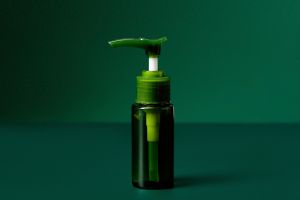Fire extinguishers are essential safety devices designed to combat small fires before they escalate into dangerous situations.
Knowing how to use a fire extinguisher correctly can be the difference between controlling a fire and facing serious consequences.
Types of Fire Extinguishers
Before learning how to use a fire extinguisher, it’s crucial to understand the different types available, as each is designed for specific classes of fire:
1. Class A: For ordinary combustible materials such as wood, paper, and cloth. These extinguishers often contain water or foam.
2. Class B: For flammable liquids like gasoline, oil, and grease. Class B extinguishers typically use foam, carbon dioxide, or dry chemicals.
3. Class C: For electrical fires, these extinguishers often contain dry chemical agents that do not conduct electricity.
4. Class D: For combustible metals such as magnesium and sodium, Class D extinguishers use a dry powder to smother the fire.
5. Class K: For cooking oils and fats, often found in commercial kitchens, these extinguishers use a special wet chemical agent.
Knowing the correct type of extinguisher to use is essential for effectively combating a fire.
The PASS Technique
The most commonly recommended method for using a fire extinguisher is the PASS technique, which stands for:
1 .P - Pull the Pin: Start by pulling the safety pin located at the top of the extinguisher. This pin prevents accidental discharge. Hold the extinguisher upright and aim it away from your body while pulling the pin.
2. A - Aim Low: Stand about 6 to 8 feet away from the fire and aim the nozzle at the base of the flames. Targeting the flames won’t extinguish the fire; you need to aim at the fuel source.
3. S - Squeeze the Handle: Firmly squeeze the handle or lever to release the extinguishing agent. Ensure a steady, controlled flow for effective fire suppression.
4. S - Sweep Side to Side: Sweep the nozzle from side to side while aiming at the base of the fire. Continue this motion until the fire is completely out, and watch for any signs of re-ignition.
Assessing the Situation
Before using a fire extinguisher, it's essential to assess the situation. If the fire is small and manageable, and you have a clear escape route, you can attempt to extinguish it. However, if the fire is large, spreading quickly, or if you feel unsafe, prioritize evacuating the area and calling emergency services. Your safety should always come first.
Safety Tips
While knowing how to use a fire extinguisher is crucial, it’s equally important to keep safety in mind:
1. Assess the Situation: Before using an extinguisher, quickly evaluate the fire’s size and behavior. If the fire is large, spreading rapidly, or you feel unsafe, evacuate immediately and call emergency services.
2. Ensure a Clear Exit: Make sure you have a clear path to exit the area before attempting to extinguish the fire. Your safety should always come first.
3. Use the Right Extinguisher: Always use the appropriate type of fire extinguisher for the specific fire. Using the wrong extinguisher can exacerbate the situation.
4. Regular Maintenance: Check your fire extinguishers regularly to ensure they are charged and in good working condition. Most extinguishers have a pressure gauge; if the needle is in the green zone, it is charged.
Training and Preparedness
One of the best ways to ensure you know how to use a fire extinguisher correctly is to participate in fire safety training programs. These courses often cover various topics, including fire behavior, different types of extinguishers, and practical training on using extinguishers effectively. By becoming familiar with fire safety protocols and practicing with extinguishers, it will build confidence in your ability to respond to fire emergencies.
Dear Lykkers! Understanding how to use a fire extinguisher correctly is a vital skill that can help save lives and property during a fire emergency. By familiarizing yourself with the different types of extinguishers available and practicing the PASS technique, lykkers can be better prepared to handle small fires effectively. Equip yourself with the knowledge and confidence to act decisively in an emergency, ensuring a safer environment for yourself and those around you.


